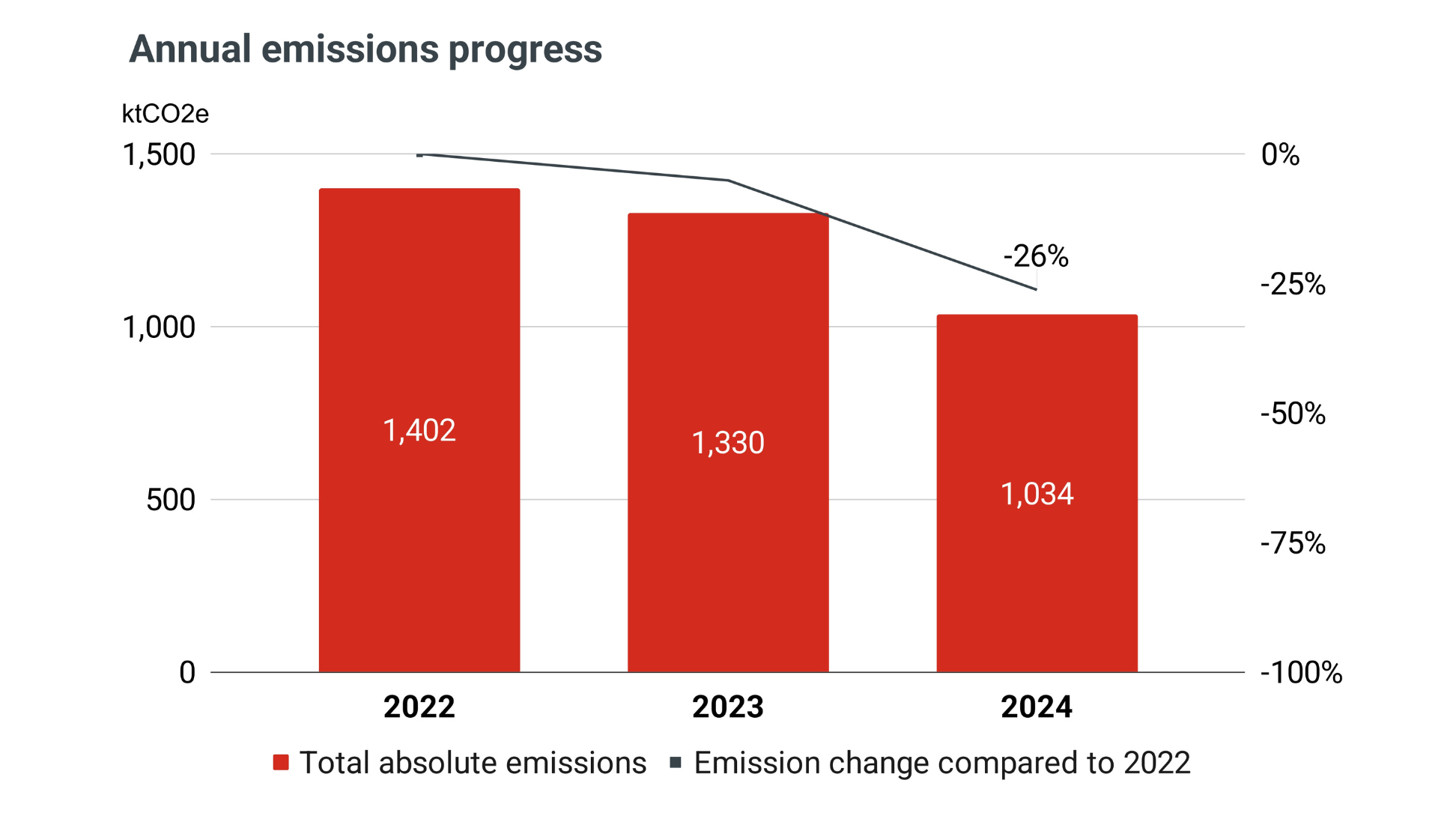Hiab is committed to doing its share to limit global warming to 1.5°C.
Our impacts
The use phase of Hiab’s products by customers is where the large majority of our greenhouse gas emissions are generated (65% in 2024), primarily due to emissions from diesel-powered machinery. Similarly, CO2 emissions from our supply chain are significant (34%), largely stemming from the extraction and manufacturing of raw materials and components, especially steel. While emissions from our own operations account for only a small fraction of our total emissions (1%), they remain an important focus for reduction, as they are fully within our control.

Our progress
Hiab's emission reduction ambitions are aligned with the 1.5°C pathway set forth in the Paris Agreement, reflecting our commitment to doing our share to limit global warming. In 2024, our total emissions decreased by 26% compared to 2022. Although emission intensity improved, overall emission reduction was primarily driven by a decreased economic activity.
Hiab's updated science-based targets for reducing greenhouse gas emissions were published in 2025, and they are pending validation by the Science Based Targets initiative (SBTi).
The targets are:
- In Hiab's own operations (scopes 1 and 2): Achieve a 50% reduction by 2030 and 90% by 2040, compared to a 2022 base year.
- In the value chain (scope 3): Achieve a 25% reduction by 2030 and 90% by 2050, compared to a 2022 base year.
How are we reducing our carbon footprint?
To decarbonise our own operations, we focus on electricity consumption at our sites and fuel use by our service fleet. For example, in 2023, Hiab completed the installation of solar panels at its assembly site in Spain. This installation aims to replace more than 34% of the site’s energy consumption with renewable energy. In 2024, we had already reduced our scope 1 and 2 emissions by 41% compared to 2022.
To tackle emissions generated in our supply chain, we must find better alternatives to the components we buy and work closely with our suppliers. We have, for example, partnered with the steel manufacturer SSAB to introduce fossil-free steel to the load handling industry in Hiab’s equipment.
We are committed to providing energy efficient and low-emission solutions for our customers to help them reach their climate targets. Our eco portfolio is our most important tool in this work. We continuously improve the environmental performance of our offering through, for example, electrification.
Scope 1 and 2
1% of 2024 CO2e emissions
Non-fossil energy
Process efficiency
Decarbonised vehicle fleet
Scope 3 upstream
34% of 2024 CO2e emissions
Low-carbon steel
Other alternative materials
Active collaboration with suppliers to drive value chain emission reductions
Scope 3 downstream
65% of 2024 CO2e emissions
Regulatory push to decarbonise road transport
Number one partner for zero emission trucks
Improved energy efficiency of equipment
Lifecycle service offering to enable optimal operation
